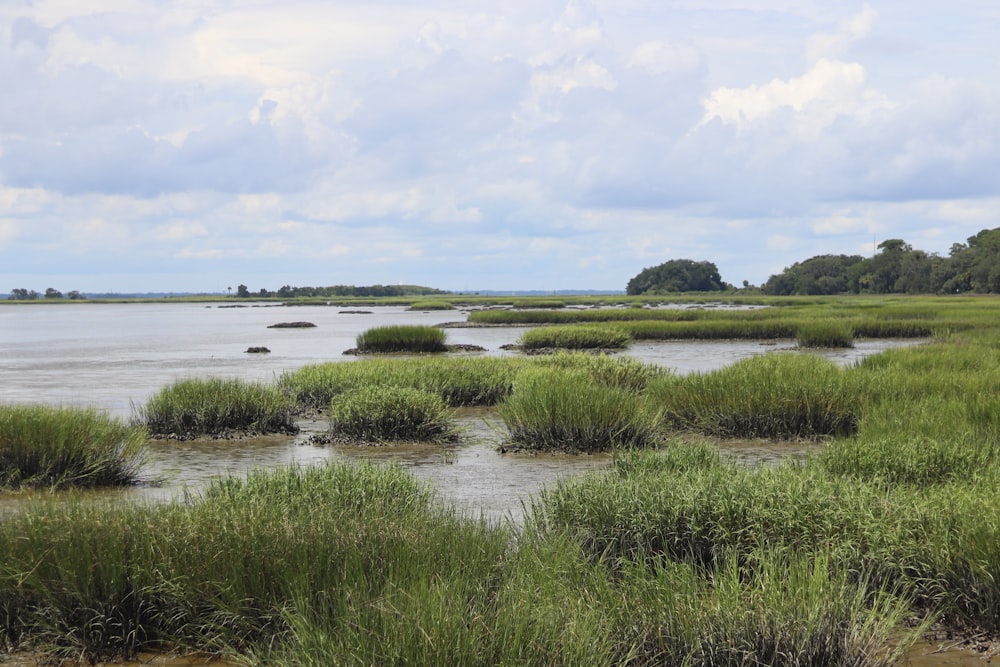All about Marshy Area
Marshy area is a typical crossword puzzle clue for a low-lying, moist, and spongy land area. For crossword puzzle fans, include the clue “marshy area” with the answer “swamp.” Additionally, includes the clue “marshy area” with the answer “bog,” which is a sort of marshy environment distinguished by wet, spongy ground. To summarize, “marshy area” is a crossword puzzle clue that can relate to a range of wet, low-lying geographical locations, such as swamps, bogs, and bayous. The term is frequently used in crossword puzzles to encourage solvers to consider different types of wetlands and their characteristics. Marshy environments, often known as wetlands, offer several benefits to both the environment and humans. They replenish groundwater resources, improve water quality by eliminating pollutants, mitigate flooding by absorbing and storing excess water, and provide habitat for a variety of plant and animal species. Wetlands are critical to biodiversity because they provide food, breeding grounds, and nesting sites for a wide range of aquatic and terrestrial organisms. They also help to mitigate climate change by sequestering carbon in plant biomass and soil, lowering greenhouse gas emissions. Furthermore, wetlands provide economic benefits by supporting commercial and recreational fishing, creating recreational opportunities, and contributing to tourism and energy production. Despite their importance, marshy areas confront numerous issues, including pollution, habitat loss from human activities such as agriculture and urbanization, and the effects of climate change, such as increasing sea levels and shifting precipitation patterns. As a result, identifying and protecting marshy places is crucial for preserving ecological balance, increasing biodiversity, and ensuring the health of natural ecosystems and human populations. Conservation efforts and long-term management strategies are critical for protecting and restoring these key ecosystems. Marshy landscapes and their ecosystems confront a number of concerns, including development, pollution, invasive species, and climate change. These concerns can have a considerable impact on wetlands’ ecological health, resulting in biodiversity loss and the displacement of many species that rely on them for existence. Recognizing and addressing these risks is critical to ensuring the long-term viability of marshlands and their ecosystems.

The Wonderful World of Marshy Areas.
Marshy environments, which are sometimes represented as dark and murky landscapes, are actually critical ecosystems that support a wide range of life types. Wetlands, which include swamps, bogs, and bayous, are critical to maintaining our environment’s equilibrium.
Wetlands have crucial roles in our environment, despite their appearance. Their importance cannot be emphasized, since they operate as natural filters and provide habitat for innumerable species.
Exploring the Benefits of Wetlands
Wetlands provide numerous benefits to the environment and human communities. They serve as nature’s sponges, collecting excess water and avoiding floods while also purifying and replenishing groundwater supplies.
Biodiversity Hotspots: The Diversity of Wetland Fauna and Flora
One of the most striking features of wetlands is their amazing biodiversity. From rare plant species to various aquatic critters, these locations are true centers of life, supporting a complex network of interconnected ecosystems.
Mitigating Climate Change: Wetlands as Carbon Sinks.
In an era of climate crisis, wetlands emerge as unsung heroes. Their ability to trap carbon from the atmosphere is critical for minimizing the consequences of climate change, making them vital assets in the fight against environmental degradation.
Threats to Marshy Areas: An Impending Crisis
Despite their unquestionable importance, marshy landscapes confront a number of dangers that endanger their survival. From human encroachment to pollution, these ecosystems are under siege, with issues that require immediate response.
Development is draining the lifeblood of wetlands.
Rapid urbanization and industrialization have resulted in the invasion and destruction of wetlands globally. Draining these places to make space for development projects disrupts the delicate balance of these ecosystems, causing lasting damage.
Pollution: Contaminating the Well of Life
Pollution has a huge impact on the health of wetlands. Pollutants injected into these ecosystems, ranging from industrial runoff to domestic garbage, exceed their natural absorption capacity, resulting in deterioration and biodiversity loss.
Invasive Species are disrupting the harmony of wetland ecosystems.
The introduction of invasive species into wetlands poses a significant threat to native flora and animals. These invasive species outcompete native organisms, disrupt food chains, and upset the delicate balance of these ecosystems, causing extensive ecological devastation.

Climate Change: A Gathering Storm for Wetlands.
Climate change is perhaps the greatest serious threat to marshlands. Rising sea levels, catastrophic weather events, and altered precipitation patterns pose grave challenges for many ecosystems, pushing them to the brink of collapse.
Conclusion:
To summarize, marshy places, despite their enigmatic attractiveness, are experiencing an existential crisis. It is critical that we recognize their invaluable contributions to our world and take coordinated action to safeguard and preserve them for future generations.







